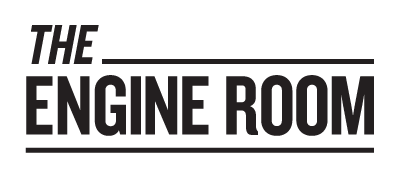The Engine Room’s Operational Safety Diagnostic (Safety Evaluation Process) provides a targeted evaluation of how an organization functions with respect to all facets of operational safety performance including strategy, culture, processes, leadership capability, systems, metrics, programs and operational execution.

Safety Evaluations and Assessments
The Operational Safety Diagnostic provides a concrete unbiased identification of the management and employee’s current approach to operational safety and the improvement opportunities present. It identifies and assesses the specific root causes of current safety road blocks and opportunities and prioritizes high value target areas.
Further, it determines the degree to which safety processes and systems conflict with or align with error reduction and human performance principles. The ultimate objective of the diagnostic is to go beyond a review of the current operational situation, and to provide client leadership with an organizational assessment of the primary underlying safety improvement challenges and provide targeted recommendations designed to support accelerating operational safety performance going forward. The Engine Room’s innovative and state of the art evaluation approach is predicated on achieving safety performance improvement results through applying the principles of:
- Deploying utility experienced safety and operational excellence professionals
- Achieving the highest quality and most candid employee feedback
- Creating as little disruption and burden to ongoing operations as possible
- Meeting all milestones, timelines and key dates as agreed upon with the client
- Providing the true root causes behind safety improvement opportunities
- Providing specific mitigation strategies and recommendations that are actionable
Methodology
The Operational Safety Diagnostic methodology is predicated on the belief that best in class safety performance occurs when the combination of safety strategy, safety leadership, safety process, safety communication, engagement, and safety execution converge. Critically, no single item is the “silver bullet” that will overcome weakness in the other areas. Some implications are as follows:
- Since organizations and individual managers have different strengths and weaknesses, The Engine Room believes it is critical to assess each situation uniquely to understand the root causes for different conditions before proposing strategies that will support mitigation and performance improvement.
- For individual managers to be successful in their roles, they must be able to operate effectively within all the safety operational excellence pillars (strategy, leadership, process, etc.), with equal ease and gaps in any area represents opportunities for improvement and development.
- Safety leadership competencies will have different dimensions at different levels (executives versus front-line supervisors) to reflect the differing scope of management functions. Therefore, how different managerial levels operate in each area (strategy, leadership, process, etc.) is tailored to the specific level of leadership.
Approach
Unlike an internal safety perception survey or online safety assessment (which typically produces high-level symptomatic data points, great for benchmarking; yet problematic in addressing specific safety determinants, improvement opportunities and or strategies), the Engine Room Operational Safety Diagnostic is uniquely different.
Through a two pronged approach of conducting a series of tailored and candid one-on-one interviews with leaders and employees from the full vertical slice of the organization coupled with direct field and leadership observation, the safety data points gathered are impressively specific and robust in comparison.
To obtain both the best quality and a representative sample of perspectives, The Engine Room typically targets 60-70% of leadership positions (Directors/Managers/Supervisors), and approximately 5-10% of front line employees attaining feedback from the ‘full vertical slice’ of the organization. Each interview takes between 30 and 45 minutes long and is based on a question set tailored with the client organization which includes but is not limited to:
- The clarity and support for safety goals and objectives
- Safety leadership alignment and managerial capability
- The effectiveness of safety and operational communication practices
- Safety systems and processes
- Employee engagement and the culture of accountability
- Safety and operational performance and the ability to execute
Surveying a cross-section of the organization allows the Engine Room to determine safety leadership and process improvement opportunities at an organizational level as well as pin-point regional opportunities and mitigation strategies that support safety and operational performance. Direct observation of routine operational activities such as; field work, field level risk assessments, planning sessions, formal and informal crew safety meetings and safety communication practices, from seasoned Engine Room safety professionals provides additional value in support of aggregating the highest quality data points which support the diagnostic process.
Following the completion of the interview and observation portion of the diagnostic, the Engine Room team members prepare an Operational Safety Diagnostic report outlining the key findings/themes including strengths, challenges and root causes of operational improvement, leadership and safety opportunities and outline specific recommendations for client organization consideration. The conclusion of the diagnostic phase is the presentation of the Operational Safety Diagnostic report to the client organization senior leadership team.

